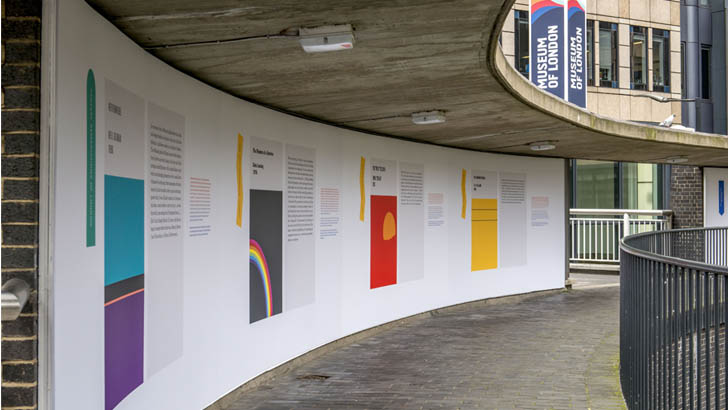Museum of London
I'm really thrilled to announce that the Museum of London has recently installed my curated display "Imagined Futures." The display was commissioned as part of the year-long "City Now: City Future" programme of events and the beautiful design work was done by Martin McGrath Studio who has taken the first editions of each of the texts featured and interpreted these original covers into colourful designs that are visually arresting. The display is installed at the Museum's Rotunda terrace, is free to access and will be up until April 2018.
Writers displayed include: Mary Shelley, H. G. Wells, Richard Jefferies, George Orwell, John Wyndham, Anthony Burgess, J. G. Ballard, Emma Tennant, Doris Lessing, Neil Gaiman, J. K. Rowling, China Miéville, Maggie Gee, Bernardine Evaristo and Julie Myerson.
Here's the blurb:
Of all cities, London is one of the most widely represented in literature. During the 19th century, when it rose to prominence as the centre of the British Empire, London was considered the peak of civilisation. However, this achievement was matched by the violence of a colonial system that damaged the places and peoples from which the city drew its vast wealth, in India, Africa and the Caribbean.
London therefore made the ideal setting in which to imagine future visions – in books that destroy the metropolis through scenes of devastation, or rebuild it as a fairer society. From Mary Shelley’s disaster novel, The Last Man (1826), to H. G. Wells’s techno-utopian vision in The Sleeper Awakes (1899), London established its reputation as a city in which to enact different visions of the future in literature.
In the 20th century, such imagined futures became increasingly bleak, particularly in the post-World War II period, and by the 1970s writers were experimenting with surreal future London landscapes. More recently, London has become home to the leading characters in influential books for younger readers, such as J. K. Rowling’s Harry Potter series and Neil Gaiman’s Neverwhere (1996). In the 21st century, as we come to terms with the environmental impact of climate change, the city has once again found a new role as a literary setting.
This display was curated by Dr Caroline Edwards, Senior Lecturer in Modern & Contemporary Literature at Birkbeck, University of London, and designed by Martin McGrath Studio. Quotes reprinted by kind permission of the authors/publishers.
And here's the full list of writers and texts featured in the display:
c19th distant futures
- Mary Shelley, The Last Man (1826)
- Richard Jefferies, After London (1885)
- H. G. Wells, The Time Machine (1895)
Interwar to mid-century near-future dystopias
- George Orwell, Nineteen Eighty-Four (1949)
- John Wyndham, The Day of the Triffids (1951)
- Anthony Burgess, A Clockwork Orange (1962)
New Wave experimental futures
- J. G. Ballard, The Drowned World (1962)
- Emma Tennant, The Time of the Crack (1973)
- Doris Lessing, Memoirs of a Survivor (1974)
Fantasy remediations
- Neil Gaiman, Neverwhere (1996)
- J. K. Rowling, The Philosopher’s Stone (1997)
- China Miéville, Un Lun Dun (2007)
Contemporary visions of the city
- Maggie Gee, The Flood (2004)
- Bernardine Evaristo, Blonde Roots (2008)
- Julie Myerson, Then (2011)







 Dr Caroline Edwards is Senior Lecturer in Modern & Contemporary Literature at Birkbeck, University of London. Her research and teaching specialisms are in 21st century literature and critical theory, science fiction and post-apocalyptic narratives, Marxist aesthetics, and utopianism.
Dr Caroline Edwards is Senior Lecturer in Modern & Contemporary Literature at Birkbeck, University of London. Her research and teaching specialisms are in 21st century literature and critical theory, science fiction and post-apocalyptic narratives, Marxist aesthetics, and utopianism.
Follow / Contact